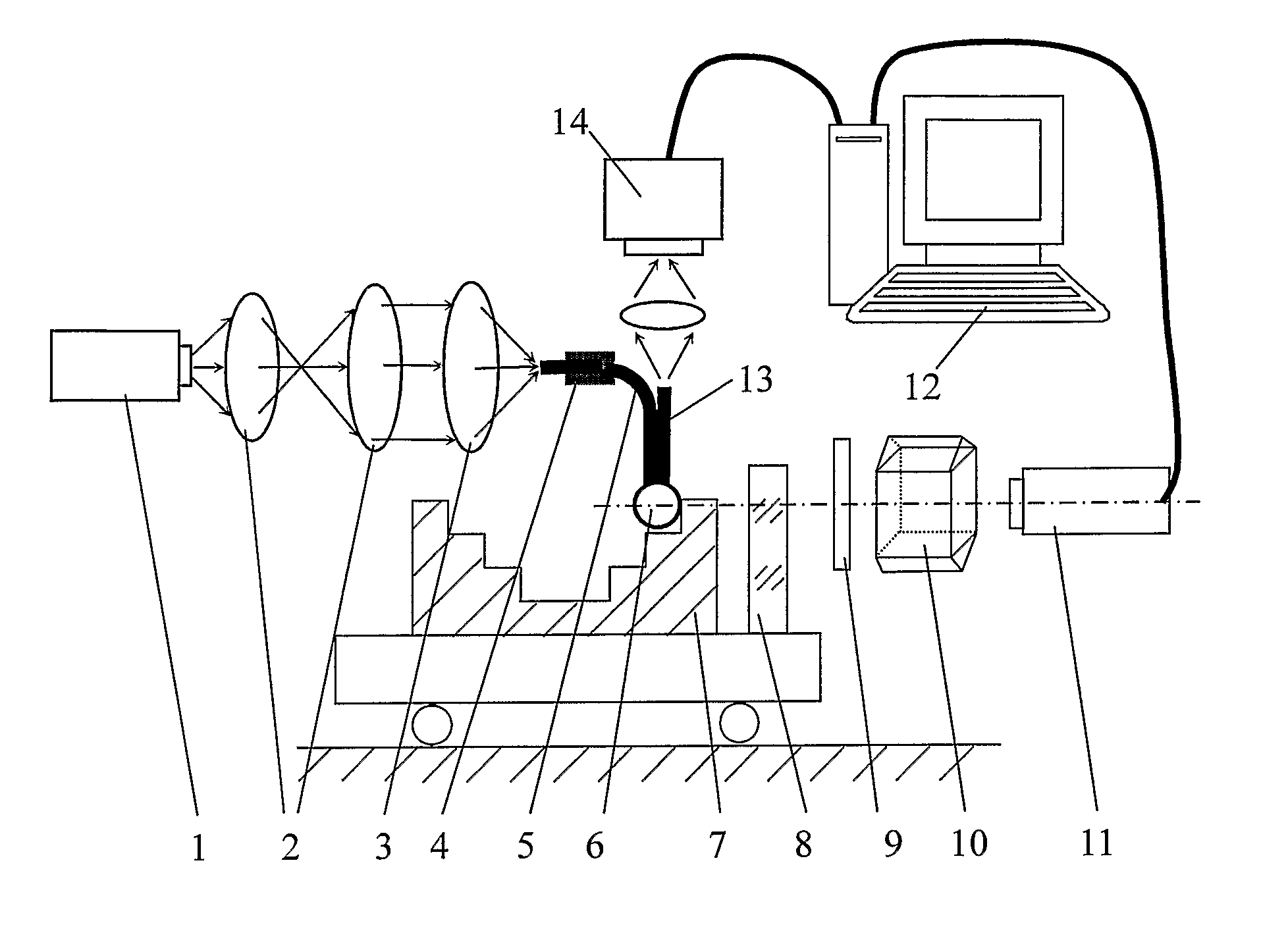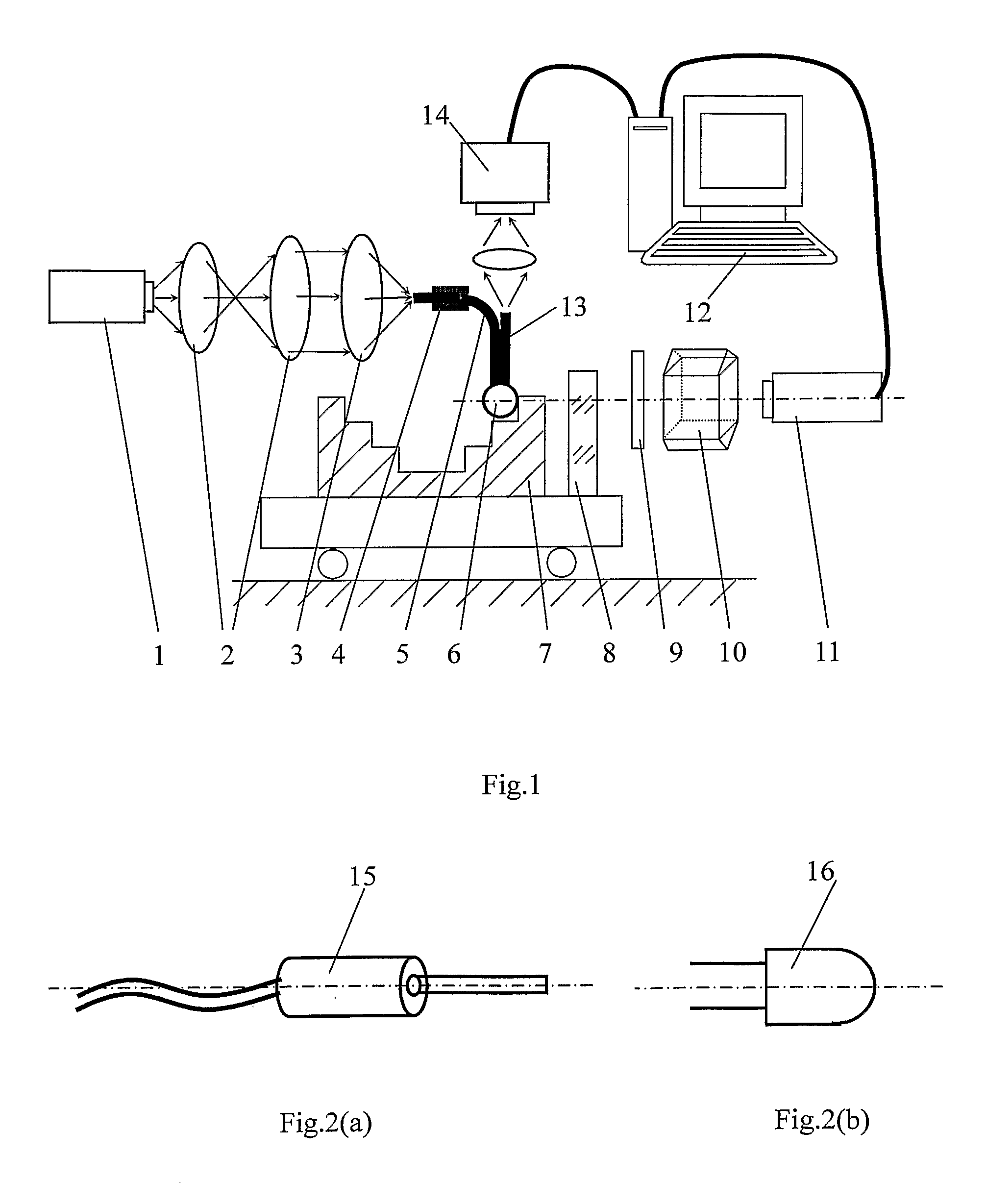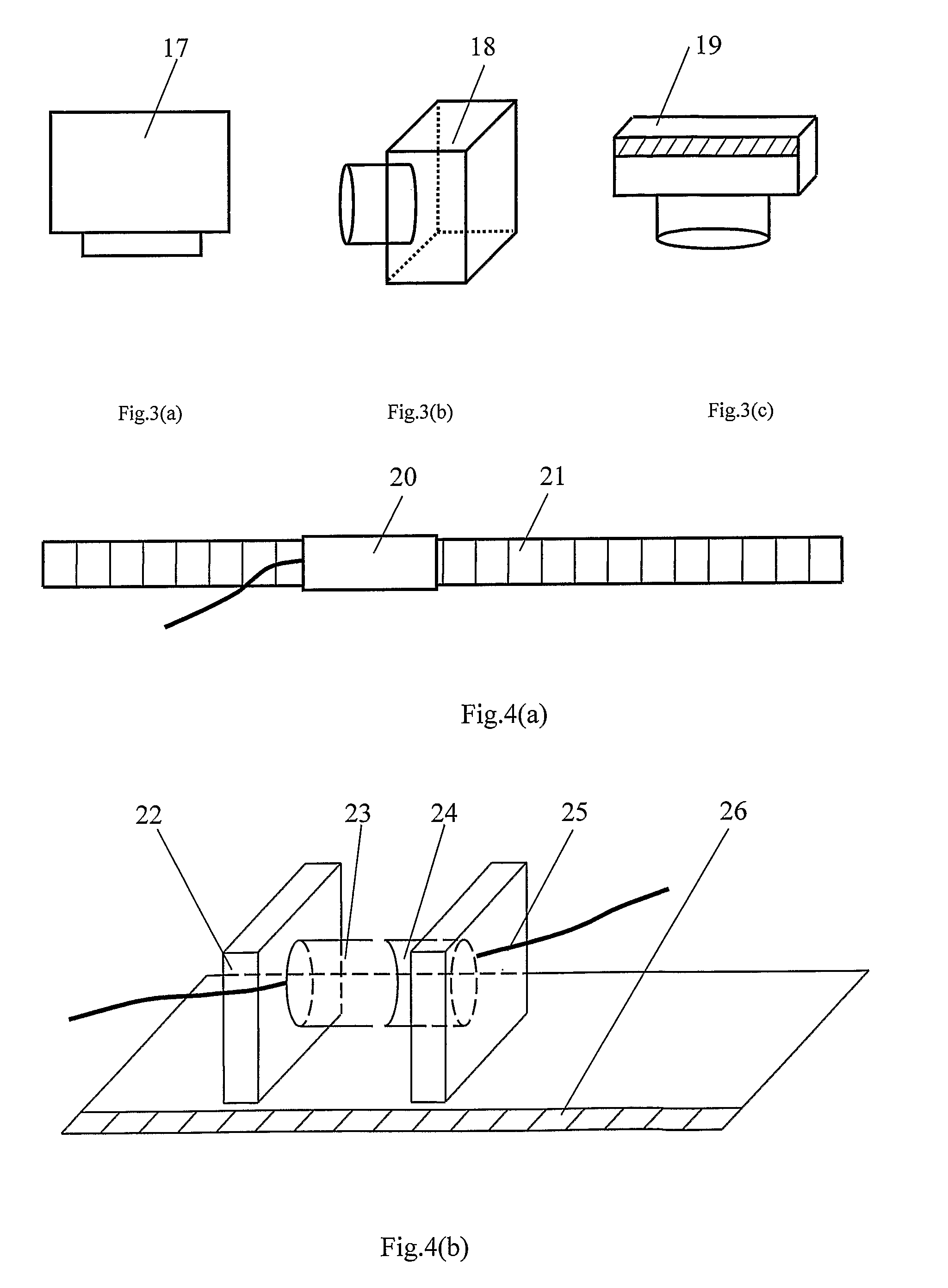Micro-cavity measuring equipment and method based on double optical fiber coupling
a technology of optical fiber coupling and micro-cavity, which is applied in the direction of mechanical measuring arrangement, instruments, and using mechanical means, etc., can solve the problems of insufficient minimum diameter and depth, inability to obtain inside information of holes, and inability to use the inside information of holes to achieve the effect of enhancing the reflected light signal
- Summary
- Abstract
- Description
- Claims
- Application Information
AI Technical Summary
Benefits of technology
Problems solved by technology
Method used
Image
Examples
Embodiment Construction
[0050]As shown in FIGS. 1˜4, the measuring equipment consists of laser (1), beam collimator and enlarger (2), optical fiber coupling lens (3), fixing block (4), incident optical fiber (5), coupler (6), worktable (7), reflector (8), λ / 4 wave slice (9), polarized beam splitter (10), double frequency laser interferometer (11), computer (12), effluent optical fiber (13), and CCD camera (14). The laser coupling unit consists of laser (1), beam collimator and enlarger (2), optical fiber coupling lens (3), and fixing block (4), and in which, laser (1), beam collimator and enlarger (2), optical fiber coupling lens (3), and one end of incident optical fiber (5) are coaxial. The double optical fiber coupling unit consists of incident optical fiber (5) in the form of an orthogonal arc, coupler (6), and effluent optical fiber (13) in the form of a straight line, and the ends of incident and effluent optical fibers are fixed on coupler (6) while the other ends are coplanar. Coupler (6) is used a...
PUM
| Property | Measurement | Unit |
|---|---|---|
| diameter | aaaaa | aaaaa |
| diameter | aaaaa | aaaaa |
| diameter | aaaaa | aaaaa |
Abstract
Description
Claims
Application Information
 Login to View More
Login to View More - R&D
- Intellectual Property
- Life Sciences
- Materials
- Tech Scout
- Unparalleled Data Quality
- Higher Quality Content
- 60% Fewer Hallucinations
Browse by: Latest US Patents, China's latest patents, Technical Efficacy Thesaurus, Application Domain, Technology Topic, Popular Technical Reports.
© 2025 PatSnap. All rights reserved.Legal|Privacy policy|Modern Slavery Act Transparency Statement|Sitemap|About US| Contact US: help@patsnap.com



